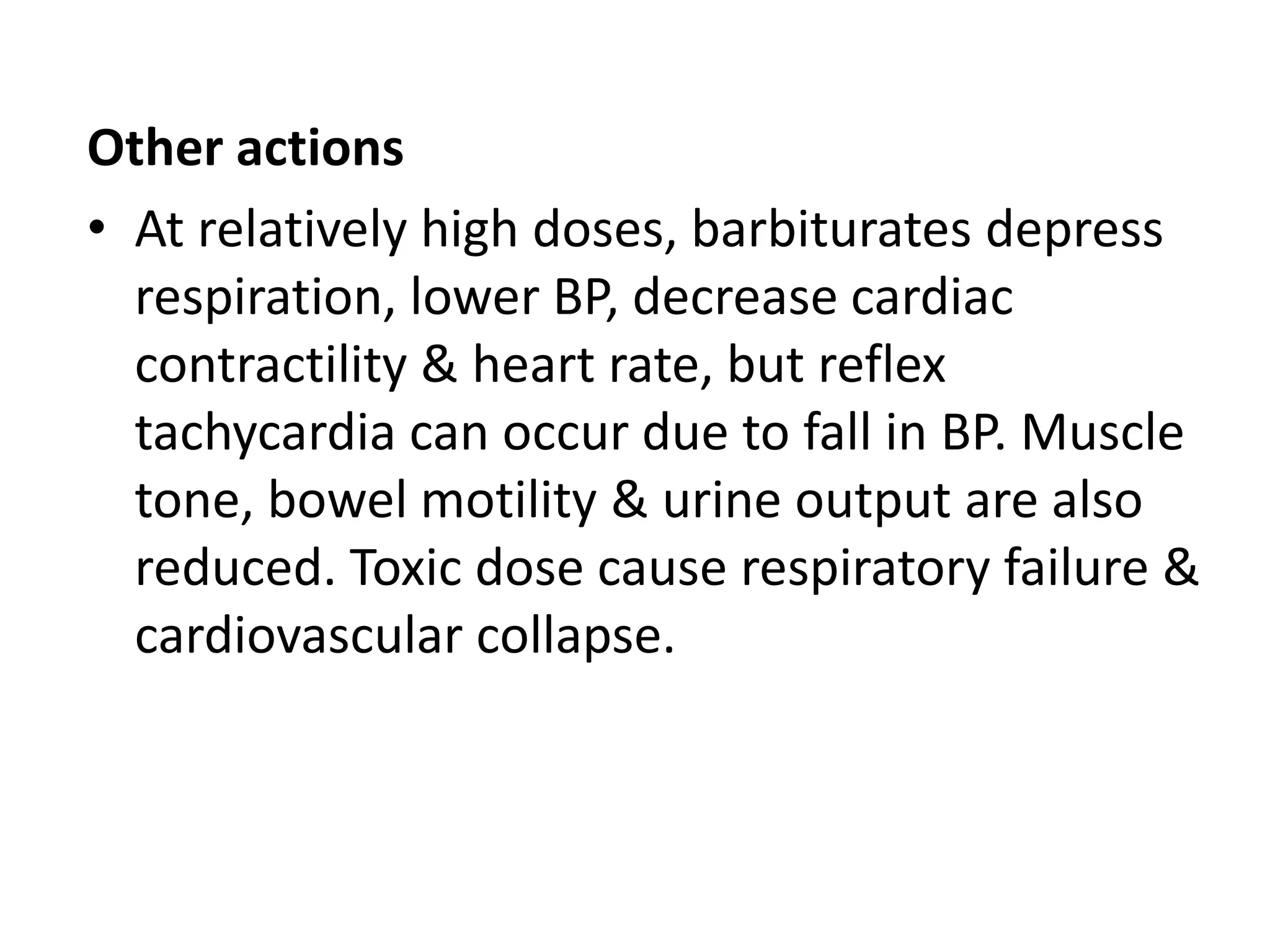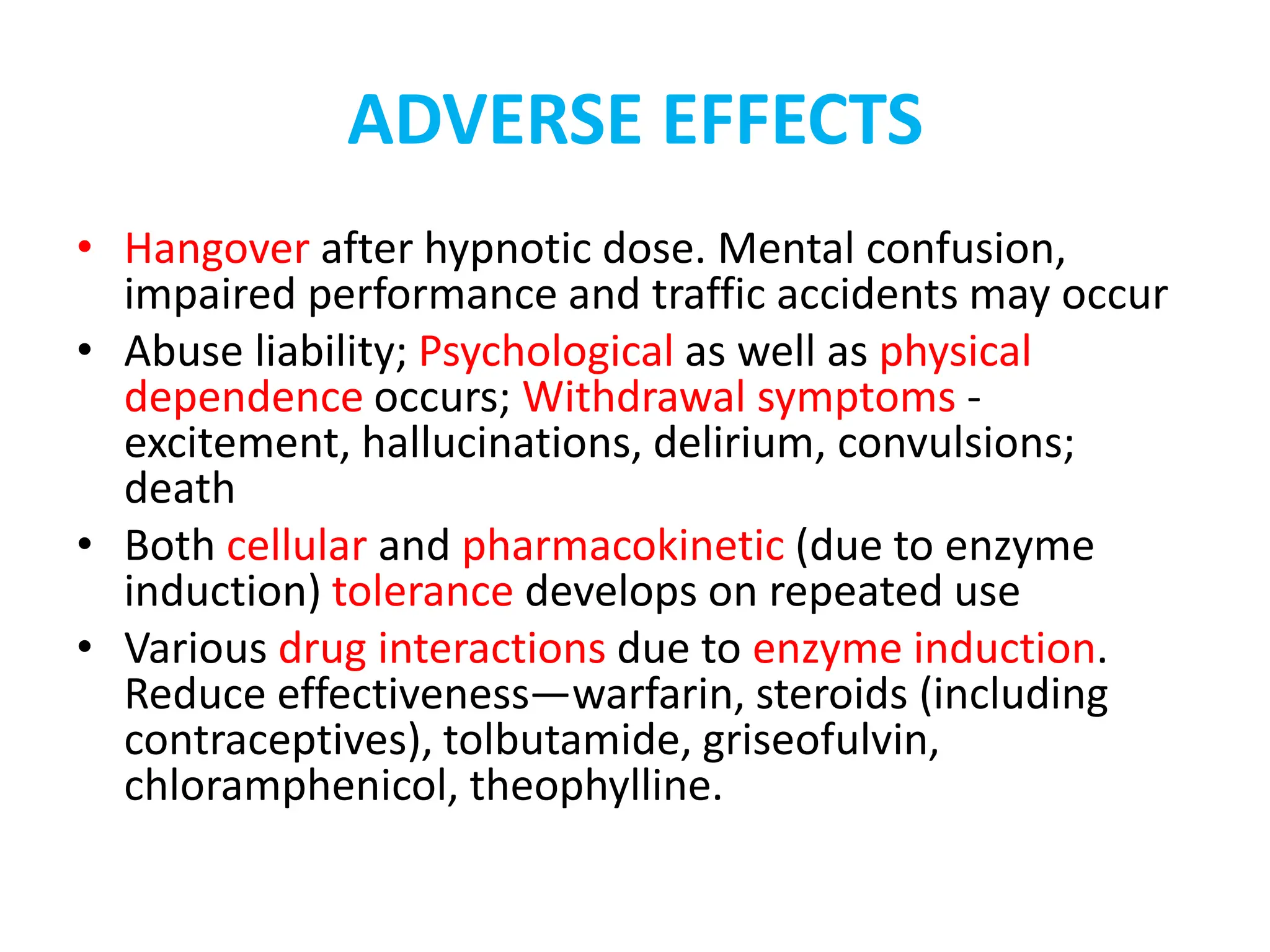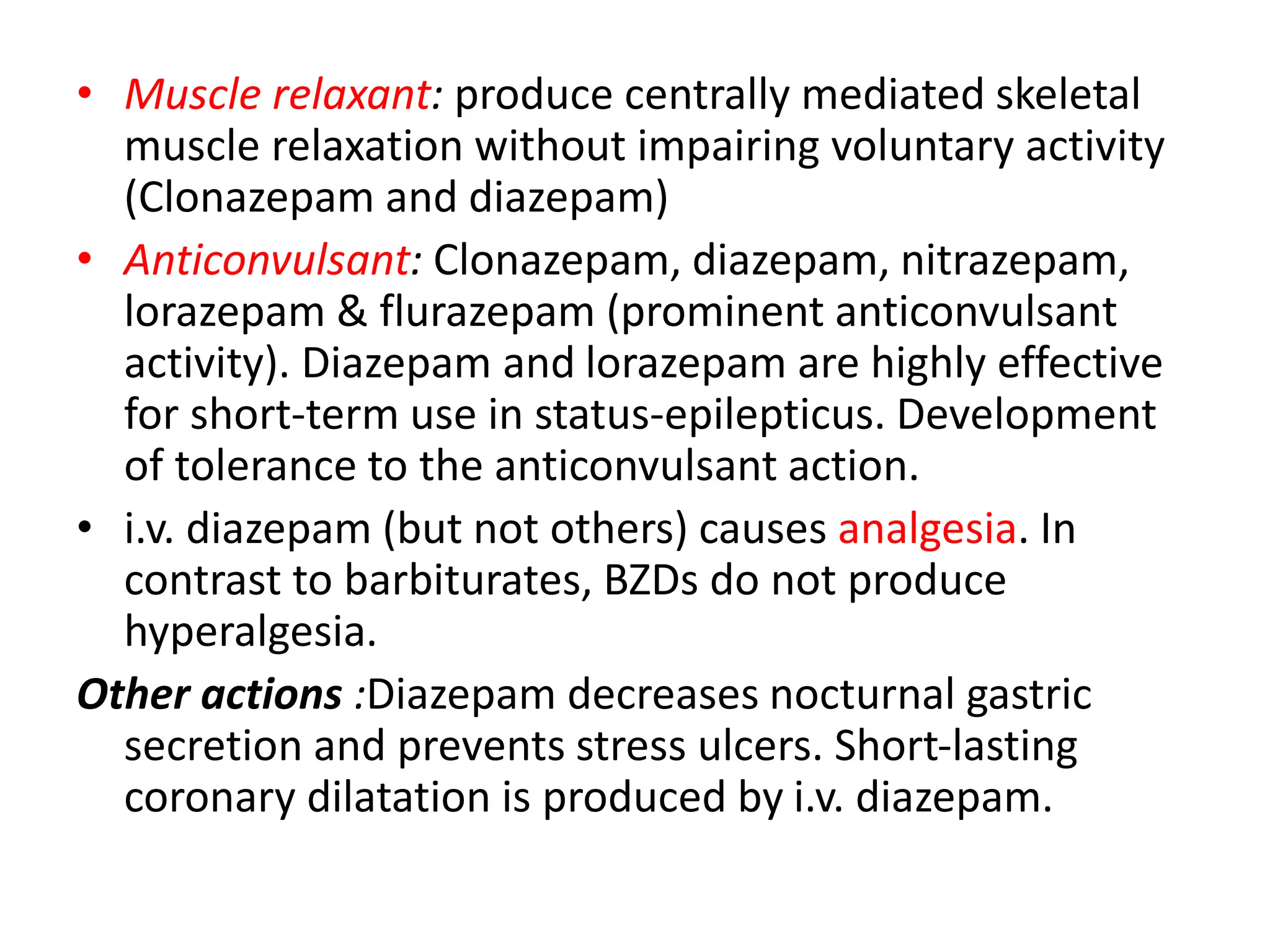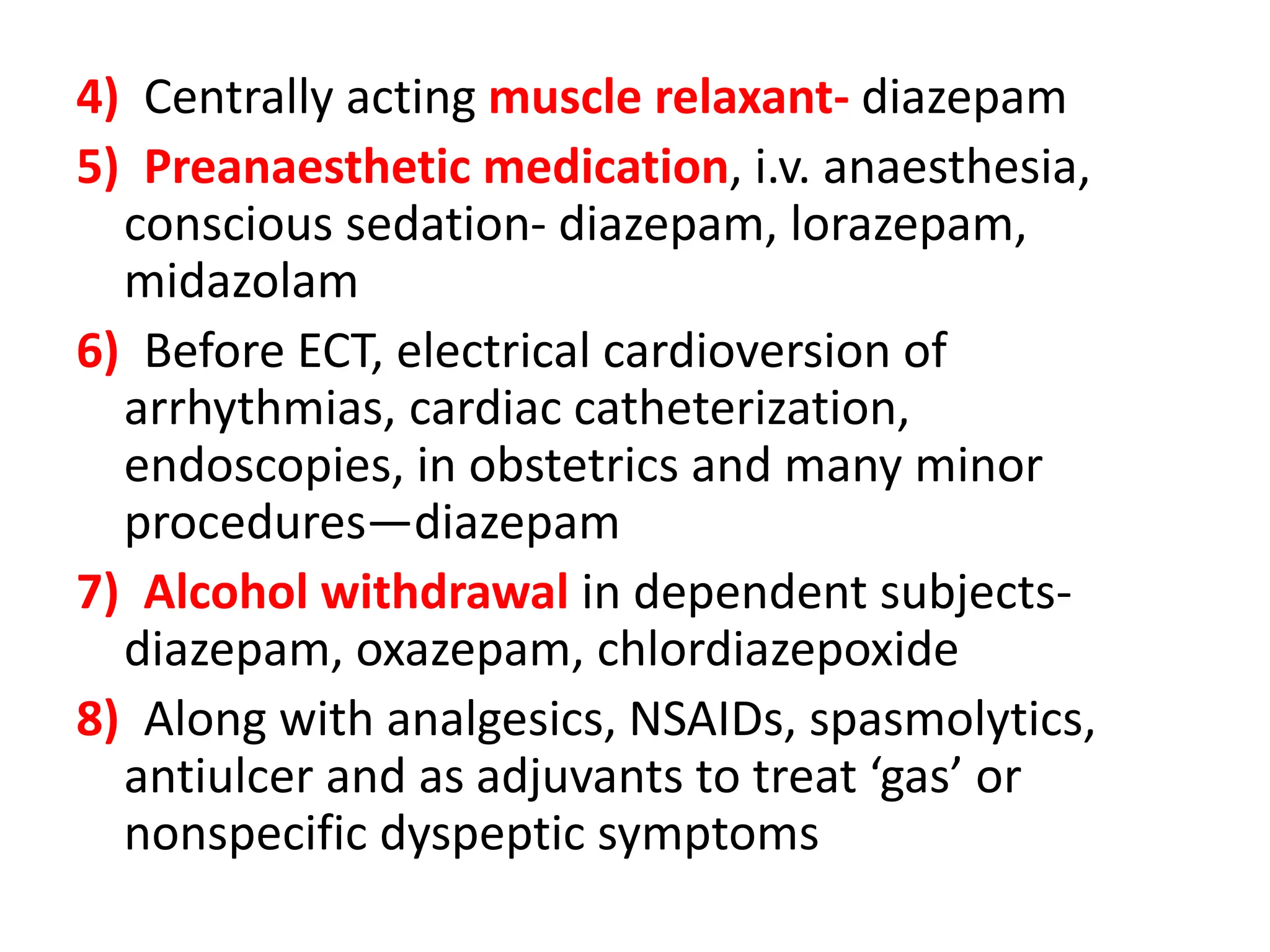The document provides a detailed overview of sedative-hypnotics, defining sedatives and hypnotics, and discussing their classifications, pharmacokinetics, pharmacological actions, therapeutic uses, and adverse effects. It covers various drug categories including barbiturates, benzodiazepines, newer non-benzodiazepines, and other hypnotics, detailing their mechanisms of action and clinical applications. The document also addresses the safety profiles and potential risks of these medications, including dependence and tolerance issues.





























